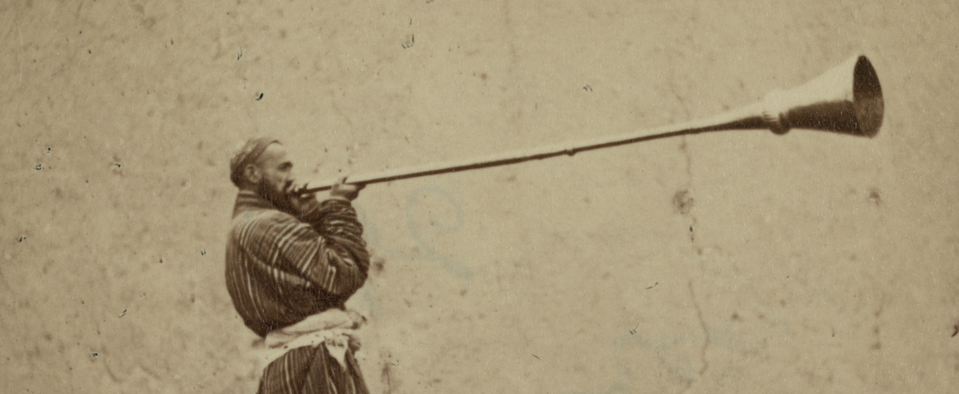
The karnay is a ceremonial brass trumpet two metres long and is the national instrument of Uzbekistan. The similarity of the name, the sacred/warrior nature of the instrument, its construction in beaten metal and even the playing techniques employed seem to imply a possible connection with the carnyx family. Following the fall of the Western Roman Empire, a Celtic diaspora rippled far and wide, as artisans, traders and soldiers of fortune sought to escape the chaos and violence of Germanic incursion. There are representations of carnyx players as far south as the Gangetic plains of India and it is conceivable that the instrument travelled along the ancient Silk Road. The karnay has strong cultural, historical and religious connotations; before touching the instrument for the very first time, the musician should put on new clothes to symbolise the start of a new journey and a new relationship. The instrument should be cleaned and polished daily. It should never be stepped over, or stored under a table or a bed, but should be kept upright. The mouthpiece should never be placed on the ground. The karnay should be held carefully, as if it was a baby. When played, the bell of the karnay should point east, to Mecca from whence Judgement Day is to be announced. Pointing the bell to the sky is symbolic of communicating one-to-one with God, and then with the people. The instrument has particular parts: the bell (kaaba), the melon-shaped large and prominent round joint (handylyak), the first section of the body (miyencha), a small round joint (kichkina handalyak), a second body section (dahana), and a mouthpiece (tarsak).
Carnyx & Co has two specially commissioned karnay in its collection.


